AXLE GeForce GT 240 Video Card Review
By
A Closer Look at the AXLE GT 240
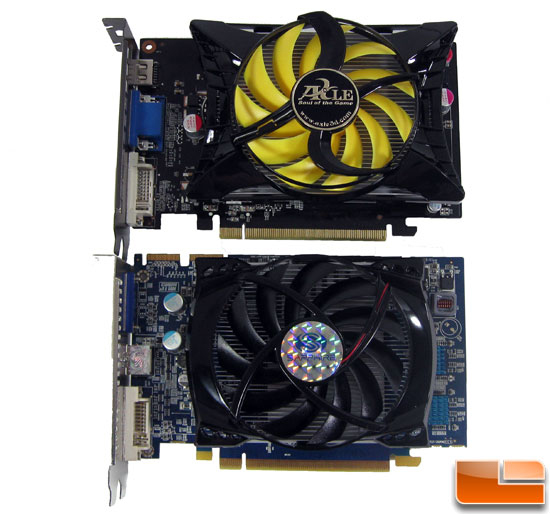
For the tests upcoming, we’ll be pitting the AXLE GeForce GT 240 against what seems to be its ATI twin, the Sapphire Radeon HD 4670, as well as the 96 Stream Processor ASUS GeForce EN9600 GSO TOP mentioned in the table earlier. As you can see above, the Sapphire Radeon HD 4670 is the exact same PCB length, and has the same style heat sink and fan, though the fan shroud is a standard Arctic Cooling design found on many other cards aside from the AXLE specific version.
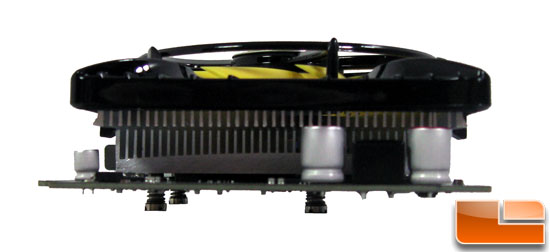
Looking from the end of the card, you can tell it is dual slot, though it is not as high in performance as many dual slot cards. This was designed for frigid temperatures compared to most equivalent cards, so we’ll take its height with a grain of salt here.
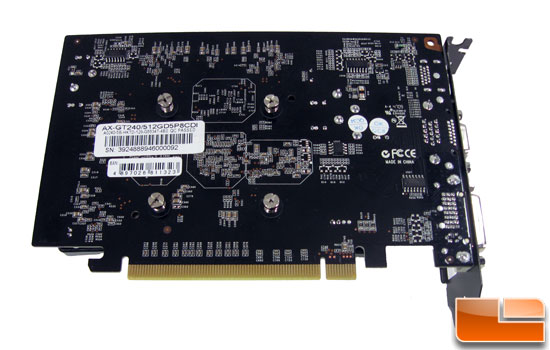
Looking at the back of the card, you can see the standard serial number/bar code stickers on its nice jet black PCB. One thing to note is the amount of free PCB real estate on this thing; compared to most cards I’ve seen which pack the PCB with so many resistors and components it’s hard to tell what color the card is, this one is pretty naked, just a few clusters of resistors here and there.
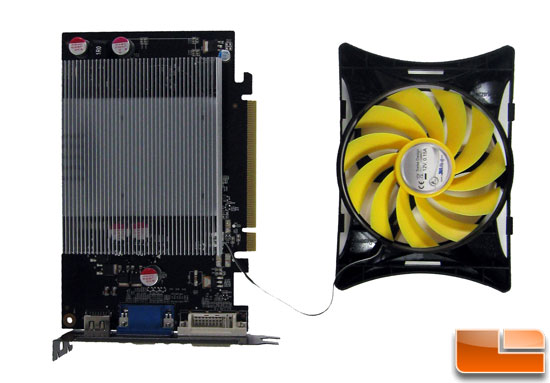
Cleaning this version fan from Arctic Cooling will be a breeze for any user as it just clips on and off, so the only screws on the entire card are the four that hold the heat sink itself on. Also note the very simple design of the heat sink.
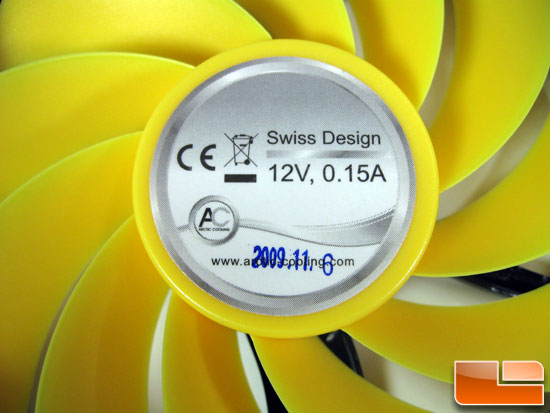

On closer inspection of the fan, you can see it is the exact same model fan that the HD 4670 has, with the same Amperage rating of 150mA which means this little guy has some power going to it.
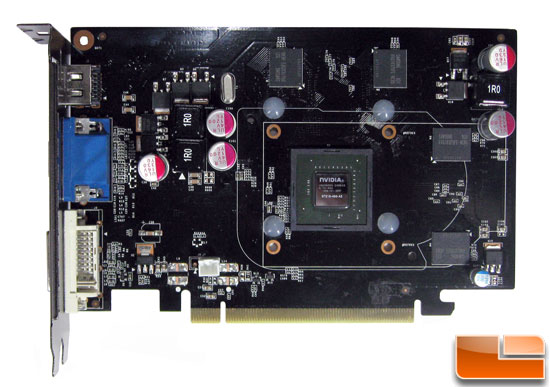
With the heat sink off, you can see the four Samsung high density 128MB Memory Modules making up the 512MB of VRAM, on again an extremely simple PCB design with just a couple of clusters of components on a sea of bare black circuit board. This board likely has fewer components on it than a Diamond Stealth II card I have from ’97, which leads me to believe the components that ARE used must be of high quality and designed to work well with each other, and without tons of regulatory components.
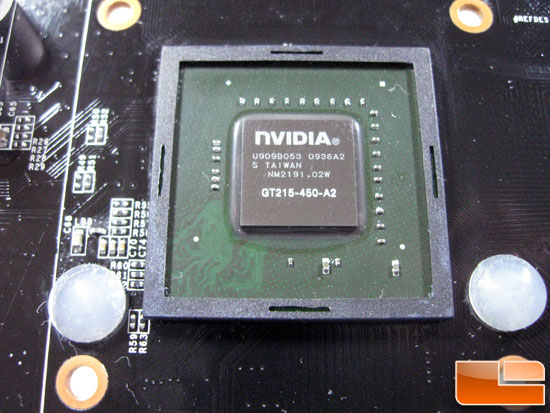
With a closer look at the core you can see the GT215-450-A2 code on the die with a protective plastic cover around the edges of the chip and a cluster of resistors to the left side. Also note the big blobs of silicone used as standoffs for the heatsink.
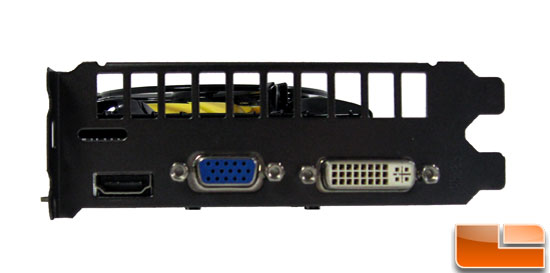
As stated earlier, this is a dual slot card with the top slot being big open vents above the HDMI 1.3a, Dual Link DVI, and VGA ports for a little extra airflow. I’m not entirely sure how much being Dual slot helps this style of heat sink, but it’s not like you can use the slot for anything else anyway, so it’s not a bad route to go. Something you do not see very often is that the mounting plate on the card is painted a very dark grey, likely to go along with the fact that many enthusiast cases are painted black inside and out. It’s just nice to see some variation there as most cards have uncolored mounting plates.
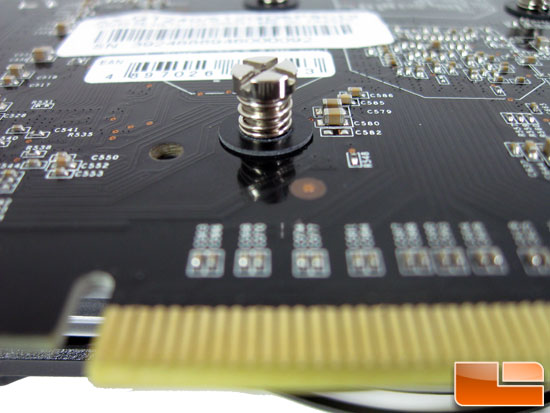
There will likely be issues running a dual-card solution
as the screws shown above actually will stop the fan from turning if you have two
cards with this style heat sink. But as this card was designed for a budget
user upgrading likely from integrated graphics, not many will run into
a problem there. Not all motherboards have the PCIe slot spacing that close together for that to be a problem, but the primary board I used for testing (Intel DX38BT) had the three PCIe slots too close together for the fans to spin freely, so this is not an ideal card for a folding machine if you plan on multi GPU Folding@Home.
as the screws shown above actually will stop the fan from turning if you have two
cards with this style heat sink. But as this card was designed for a budget
user upgrading likely from integrated graphics, not many will run into
a problem there. Not all motherboards have the PCIe slot spacing that close together for that to be a problem, but the primary board I used for testing (Intel DX38BT) had the three PCIe slots too close together for the fans to spin freely, so this is not an ideal card for a folding machine if you plan on multi GPU Folding@Home.

Comments are closed.